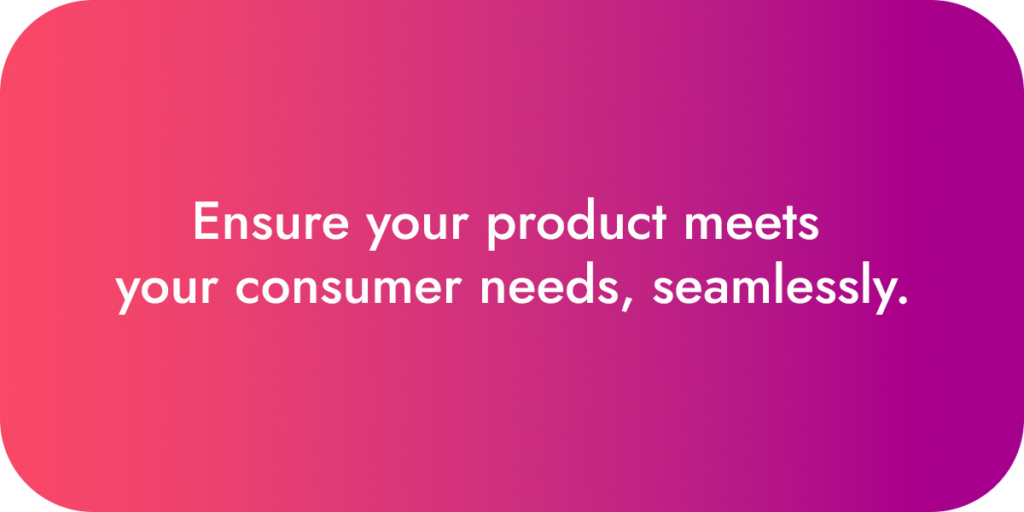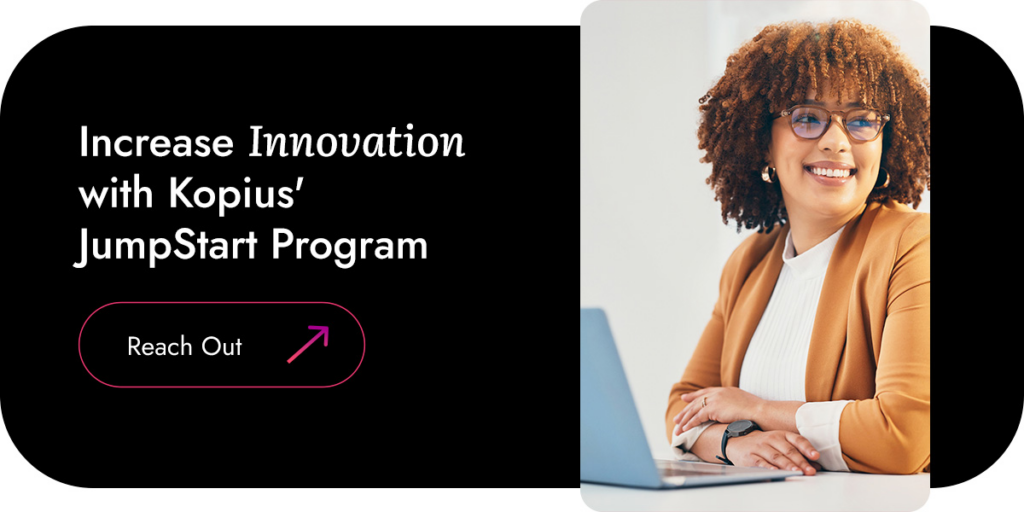
Design thinking approaches complex challenges from user perspectives. This problem-solving framework helps companies develop effective solutions and turn their ideas into tangible products or services that will grow their customer base. Using a design thinking approach with expert support expands your customer base and increases revenue.
What Is Design Thinking?
Design thinking is a human-centered design and problem-solving framework. It’s a methodology that focuses on human behavior to make product and marketing decisions. In the design thinking framework, companies analyze data to predict human behavior, determining how they can adjust their products, services, and marketing strategies to better reach and serve their target audience. It’s also an excellent way to expand a target audience and reach a wider customer base.
Design Thinking Principles
Design thinking is based on the following five principles:
- Empathy and user-centricity
- Collaboration
- Ideation
- Experimentation and iteration
- Hands-on problem-solving and action
Empathy and action are two of the main principles that set design thinking apart from other business strategy models. At its most basic level, design thinking is about getting to know your customer base and taking action to meet their needs.
How Does Design Thinking Work?
Design thinking works by providing insight into who consumers or users are. It analyzes how people think, feel, and act so companies can understand what challenges their target audiences face and what their needs are. With this valuable information, businesses can strategize how to meet consumer needs and preferences effectively.
Benefits of the Design Thinking Model
The design thinking methodology offers the following advantages.
Future-Focused Decision-Making
The design thinking framework is an effective way to analyze what future customers want. It’s more effective than traditional problem-solving methods that only focus on backward-looking data. Design thinking allows companies to look forward and expand rather than remain stagnant and simply maintain their current profits and growth rates.
Greater Reliability
Using a design thinking framework helps companies make careful, calculated decisions based on accurate predictions. It prevents decision-makers from leaning on instinct and making risky bets. Design thinking provides individuals with the evidence to make informed decisions they can trust to produce positive outcomes.
Design Thinking Process

The design thinking process happens in the following four stages:
- Evaluate: The evaluation stage consists of assessing your current processes and products. Participant observations, technology assessments, and stakeholder interviews provide insights into the current state of your business.
- Learn: The second stage of the design thinking process involves analyzing evaluation results. With these results, you can learn more about where your company succeeds and where improvements can help the most. From business priorities to unmet user needs, this step in the process provides a clear view of how you can best move your products and processes forward.
- Model: The modeling stage is when you begin to generate ideas and test them. This stage involves prioritizing critical needs, co-creating innovative solutions, developing product plans, and testing proofs-of-concept.
- Execute: The execution stage is when you determine the best approach from your ideas and proofs-of-concept. During this phase, you use defined product journeys and a technology roadmap to bring your best plans to life.
Design Thinking Steps
To implement the model’s three stages, you must carry out these important design thinking steps:
1. Empathize
Empathy may not seem like an essential corporate problem-solving skill, but it’s the most crucial part of design thinking. Empathizing with users and consumers enables you to understand who they are and how your products or services can meet their needs. The following concepts are important when empathizing with your target audience:
Observing Human Behavior
Observation, engagement, and immersion enable you to spend time with the people using or potentially using your products. You can do so with the following types of tools and methods:
- Research: Traditional research involves looking to the past to evaluate what has worked and what hasn’t.
- Interviews and surveys: Distributing questionnaires and surveys allows you to gather information and opinions directly from your consumers, learning more about their habits, interests, motivations, and needs.
- Shadowing: Shadowing is an excellent way to observe how customers use your products or services. For example, you may allow potential customers to try your products at a trade show and observe how they react to it. You can also visit stores and observe how people interact with your product. Notice what type of questions they ask before making a purchase, and ask them how they feel about the product if they are open to talking.
- Documentary: Creating a video of your product or service in use gives your team a closer look at human interaction with it so they can identify areas for improvement.
- Body language: A person’s body language while using a product can reveal how they feel about it. For example, hunching their shoulders or keeping their arms crossed shows they are not excited about a product, while a straight posture reveals they feel positive about it.
- Journals: Asking product users or testers to keep journals or document detailed notes about their use can also provide insight into how well that product meets consumer needs.
Qualitative and quantitative data are both important when learning about and empathizing with consumers. Quantitative data consists of information such as how many times people click on an ad or purchase a product. Quantitative data is based more on visual and observational research methods. It reveals more insight into a target audience’s feelings and needs, giving you the information you need to complete the next step.
Questioning Human Behavior
To empathize with consumers means to get to know who they are on a deeper level. Rather than limiting your research to what they purchase or don’t purchase, you can look closer at what drives their decisions and motivates their purchasing. Empathy is more than observing human behavior — it’s questioning it. Ask yourself the following questions about your target audience to learn how you can develop the product or service they need:
- What specific challenges do they face?
- What is important to them?
- What do they worry about?
- What are their responsibilities?
- What products or services do they prioritize?
2. Define
Empathizing with consumers leads you into the next step of the design thinking process, which is identifying problems or pain points and creating a problem statement. You must create a human-centered problem statement by focusing on consumer needs over business goals. The problem statement serves as a guide your company can reference when focusing on or refocusing its strategy and efforts.
3. Ideate
After learning about consumer behavior, identifying needs, and creating a problem statement, a company can begin to ideate. Effective ideation requires collaboration. Working as a team to brainstorm and discuss ideas is the best way to develop solutions that will meet user needs. During this step, key individuals should gather to explore various angles and think outside the box.
4. Prototype
Prototyping may consist of paper models, interactive digital mockups, or physical models. The primary goal of the prototyping step is to develop something tangible you can test on real people.
5. Test

Once your prototype is ready, you can test it and make adjustments as necessary. Testing your prototype allows you to improve an idea before investing in the resources, supplies, equipment, and labor necessary to mass-produce your product for distribution. You want to ensure your finished product meets consumer needs effectively, so the testing phase is crucial.
6. Adjust
The design thinking process helps you strategize and implement ideas quickly, and its success relies on your ability to pivot and adjust as necessary. Testing a prototype aims to find areas for improvement, so you and your team may find yourselves repeating steps as you observe consumer reactions and identify new needs. This may seem counterproductive, but it moves your company forward. The more you are willing to adjust your ideas and prototypes, the more successful your final product or service will be.
7. Produce and Distribute
Testing and adjusting your product enables you to refine it to its greatest form, ensuring your resource and labor costs result in a high return on investment. After observing reactions and making improvements, you can gather the necessary supplies, workforce, and equipment necessary to start the production, sales, and distribution process.
Design Thinking Tips
Consider the following tips to optimize your design thinking process and get the most out of it:
Eliminate Biases
Biases and judgments about a particular demographic can lead to inaccurate assumptions. For example, you may falsely assume only consumers up to age 35 are interested in running shoes or workout equipment due to an age bias. Eliminating this bias allows you to think creatively and reach a wider customer base. You might design special workout equipment that meets the needs of older individuals.
The same concept applies to other biases related to gender, race, socioeconomic class, culture, and ethnicity. When you remove biases and judgments from your thought patterns, you can identify consumers’ abilities, interests, and needs more effectively.
Pay Attention to Inconsistencies
Inconsistencies between what people say and what they do can reveal more of their motivations. Paying attention to these inconsistencies can help you design a product or service that meets needs they may not be aware they have. For example, people may say they have good organizational skills but display poor organizational skills while using a new app or software program. Noticing this inconsistency can help your team develop a more user-friendly interface that helps people organize their data, documents, contacts, and communications.
Ask Neutral Questions
You can learn more from people by asking neutral questions. For example, “How do you feel about your meal kits’ cooking instructions?” is a more open-ended question than “Do you find your meal kits’ instructions easy to follow?” The first question encourages consumers to reflect on their experience without your opinion, while the second may prompt them to agree with you. Remember that the goal is to gather honest answers, not persuade customers to praise the product.
Capture Details
Capturing detailed answers allows you to go back over your conversations with customers and analyze their answers. Writing detailed notes while conversing with a customer is difficult, so it’s best to have another person take notes and write answers verbatim while you interview consumers. Voice recording is another excellent option if you can’t take another person with you.
Rethink Personalization

The design thinking model is also essential for your marketing and product engagement strategies. After learning about your target audience on a deeper level, you can evaluate your marketing materials and personalized messaging to reach them better and establish your product as a more valuable brand.
Prioritize Action Over Perfection
When you reach the prototyping phase of design thinking, action is crucial. Creating a flawed prototype is better than hesitating when you’re unsure about a detail or decision. Pushing uncertainties to the side allows you and your team to take fast action and develop a prototype you can learn from and refine as you go.
Consider Using a Design Thinking Consultant
A design thinking consultant can increase your chances of success. Professional consultants have the digital technology, expertise, and tools to implement design thinking strategies in any industry. While any company can use the design thinking framework, a consultant, as a neutral party, may be best suited to navigate varying stakeholders’ opinions and optimize your strategy for the best business results.
Start Your Design Thinking Journey at Kopius
At Kopius, we’ve designed a program to JumpStart your customer, technology, and data success.
Tailored to your needs, our user-centric approach, tech smarts, and collaboration with your stakeholders equip teams with the skills and mindset needed to:
- Identify unmet customer, employee, or business needs
- Align on priorities
- Rapidly prototype solutions
- And, fast-forward to success
Tailored Workshops and Ideation Sessions
Kopius brings fresh perspectives to your company through our JumpStart program. Our experts work closely with your company’s key stakeholders to align on business priorities and uncover new product ideas, while also evaluating new technologies and ensuring data security and governance. Our ideation and prioritization programs accelerate your Product, Technology, and Data and AI success.
The ideation and prioritization effort helps to lay the foundation for your product plans and roadmaps, also giving us the ability to test and validate through proofs-of-concept. As you begin implementing your product roadmap, you can continue consulting with us for additional direction. Our global perspective and nearshore consulting enable us to be there for you when you need us most.
End-to-End Delivery Model
Kopuis uses an all-inclusive approach to design thinking solutions. This end-to-end delivery model handles your ideas and needs from concept to digital product development and ongoing maintenance. Partnering with our team provides you with long-term strategic problem-solving you can depend on.
Increase Innovation With Kopius’s JumpStart Program
Respond to changing consumer, business, and technology needs with agility and innovation by working with Kopius as your Product Ideation & Prioritization partner.
From consumer evaluation to idea conceptualization and action planning, we will help you realize digital technology concepts that allow your business to embrace a changing future and maintain efficiency. Add our brainpower to your operation by contacting our team to JumpStart your business. Contact us to learn more about our JumpStart program to unlock your potential.

Related Services: